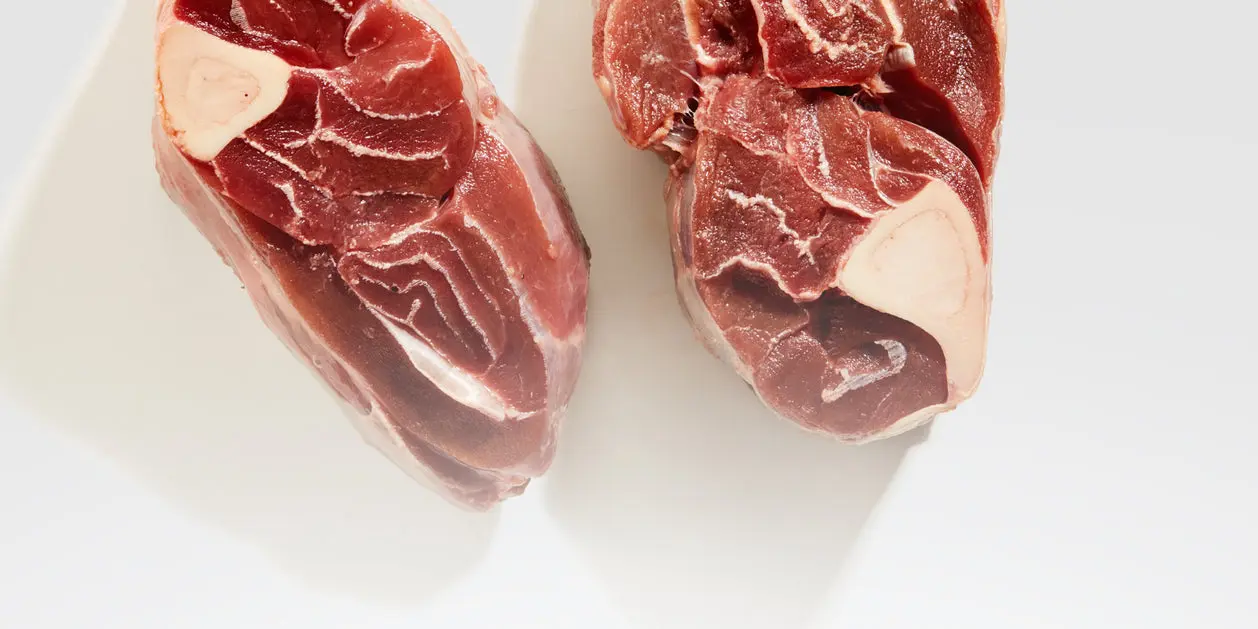
The Osso Buco
Success Guide
Cook Time & Temps
Browning
First, brown for 3–5 minutes per side over medium-high heat
Braise
Braise with preferred mirepoix for 2 hrs at 300°
Prep
Serving size: 1 pack serves 2–3.
Preferred Seasonings: Salt and pepper are a good start, but spices control the direction of the flavor profile for your finished dish. Adding aromatics, savory vegetables and fresh herbs help create layers of flavor. You can use the classic mirepoix of celery, onion, and carrots or get creative by using other ingredients. Adding an acidic component like wine, vinegar, beer, lemon juice, etc., will also help tenderize the meat.
Choosing your fat: Cook with a good amount of fat to add moisture. Choose oil or fat with a high smoking point necessary for a good sear—ghee butter or rendered fats like lard or tallow, or avocado oil.
Preferred Method
When it comes to cooking Osso Buco, the best method is definitely slow and steady, with a thorough browning before braising and scraping up the bits of caramelized meat and seasonings that stick to the bottom of the pan add extra flavor and depth to the overall dish.
- To start, preheat your oven to 300°.
- You'll start by cooking stovetop and then transferring it to the oven to finish cooking.
- Pre-heat your dutch-oven or heavy-bottom pot with a tight fitting lid over medium-high heat for 3–5 minutes.
- Once the pot is hot, add 2–3 tbsp of oil/fat.
- As soon as the oil is ripping hot, place the shanks in the pot, and sear undisturbed for about 3–5 minutes per side—It will get smoky but don't worry, adjust the heat to medium temp.
- Add more oil/fat if necessary.
Once they're browned, remove the shanks from the pot and set them aside. - Lower heat to medium (or medium-low if the pot is too hot to avoid burning the following ingredients)
- Then add in your savory vegetables, spices, aromatics and sauté until fragrant or softened.
This step is optional but you can add in a bit of tomato paste and cook for about a minute or until fragrant. - Return the shanks to the pot, and add in just enough liquid such as bone broth, wine, or beer to cover the meat. scraping up all those delicious bits from the bottom of the pan.
- Toss in some fresh herbs for extra flavor.
- Adjust heat to medium and bring to a simmer.
- Then, cover the pot with a lid and transfer it to the oven. Let it cook, checking every so often until the meat is tender.
- Keep the lid on throughout cooking to trap the moisture inside and help keep the meat juicy.
- After about 2 hours, the Osso Buco should be quite tender. If they aren't quite there yet, return them to the oven and continue braising, checking every 15 minutes until fork-tender.
- To thicken the sauce, remove the lid during the last 20–30 minutes of cooking. That lets the liquid evaporate but will also concentrate the stew's flavor.
*Extra Tips
- Use kitchen twine to tie them tightly while cooking- this keeps them together and compact for a much nicer presentation.
- Browning the meat is the first and most important step to a flavorful stew. Don't skip the browning step. It may seem like an extra bit of work, but it's worth it!
Some key things to keep in mind for a proper browning: - Pat each shank dry—this helps keep it from steaming instead of searing.
- Make sure the pan is hot—add the meat when the oil starts to shimmer and smoke just slightly.
- Avoid overcrowding the pan and leave a few inches of space between the pieces of meat—if necessary, cook meat in smaller batches. This also ensures even cooking and prevents crowded meat from steaming instead of searing.
- Once you put the meat in a pan, let it be. The meat needs a few minutes of uninterrupted contact to sear properly—it will actually stick to the bottom of the pan at first and then release naturally when seared.
Gauging Doneness
Cooking this cut will require at least 2–3 hours. Insert a fork into the thickest part of the shank. It should slide easily and the meat should be meltingly tender.